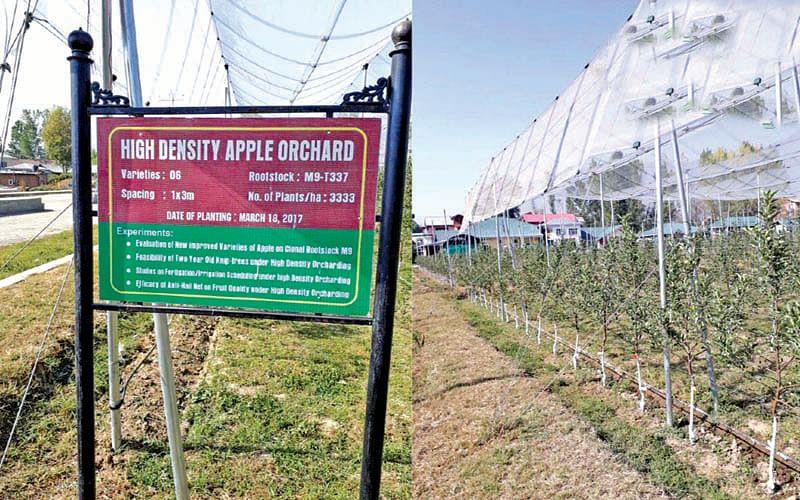(MENAFN- Kashmir Observer) Srinagar- Jammu and Kashmir has witnessed an overwhelming response to its high-density plantation initiative, with applications covering over 7,000 hectares of land-far surpassing the official target of 1,343 hectares set for the project.
The initiative, aimed at enhancing horticultural output, has attracted a large number of farmers and orchardists eager to embrace modern plantation techniques. The unprecedented demand signals a growing shift towards high-density farming, which offers significantly higher yields, better quality produce, and improved income opportunities, reported news agency KNO.
According to officials, the Department of Horticulture had initially planned to cover 1,343 hectares under high-density plantation in the upcoming financial year. However, applications have already exceeded expectations, reflecting a rising interest in modern horticultural practices across the Union Territory.
High-density plantation, particularly for apples, pears, and cherries, has proven to be far more productive than traditional farming methods.
In Kashmir, the High-Density Plantation (HADP) target for the next financial year is 808.5 hectares, but applications have already exceeded 6,240 hectares. Similarly, in the Jammu division, the target is 535 hectares, while applications received total 885 hectares.
Read Also
Invest In Horticulture Sector To Curb Unemployment: Sajad To Govt
Govt Committed To Promotion Of Horticulture, Welfare Of Traders, Growers: Javed Dar
District-wise, Pulwama has recorded the highest interest, with 1,855 hectares applied against a target of 90 hectares. In Anantnag, where the target is 70 hectares, applications have reached 1,473 hectares.
Ramban is the only district where applications have fallen short, with a target of 48 hectares but only 22 hectares applied so far.
Jammu and Kashmir's horticulture sector has been growing steadily, with Anantnag emerging as the top district in terms of horticultural land in 2023-24. Official data shows that Anantnag accounts for 32,156 hectares, making up 9.33% of the total horticultural area in the Union Territory.
Baramulla follows with 30,398 hectares (8.82%), while Kupwara has 29,167 hectares (8.46%), both contributing significantly to fruit and dry fruit cultivation. Other key horticultural districts include Pulwama (26,463 hectares, 7.68%), Shopian (26,242 hectares, 7.61%), and Kulgam (23,276 hectares, 6.75%).
On the other end, Srinagar has the smallest horticultural footprint at 3,298 hectares (0.96%), followed by Samba (5,653 hectares, 1.64%) and Bandipora (6,849 hectares, 1.99%). Other districts with comparatively smaller horticultural areas include Reasi (9,053 hectares, 2.63%) and Kishtwar (9,814 hectares, 2.85%).
Overall, Jammu and Kashmir's total horticultural area stands at 344,696 hectares. Of this, 252,257 hectares (73.2%) are dedicated to fresh fruit cultivation, while 92,438 hectares (26.8%) are used for dry fruit production.
The Kashmir Valley remains the dominant horticultural region, with districts like Anantnag, Baramulla, and Kupwara leading in production. Meanwhile, the Jammu region contributes with crops such as mangoes, citrus fruits, and ber.
Follow this link to join our WhatsApp group : Join Now



















Comments
No comment